Minor pentatonics à la Manouche
Who said that there are no pentatonics in Manouche ? That's just plain wrong... Well, we first need to agree on the term pentatonics. A pentatonic scale in essence is a scale made of 5 notes. Usually, it is used to talk about the two most used scale in Occidental music that originate from blues and that use the dominant 7th. But there are other pentatonic scales such as the one used in Chinese music, or the one used in Manouche where the dominant 7th is replaced by the 6th. And that's all about it.
The advantage of pentatonics is that just like diagonal arpeggios, they can all be played using alternate picking, forget about two consecutive downstrokes. That stands for ease of playing, and for those who like speed, it means fast and clean. Some famous guitarists use this technique a lot such as Biréli Lagrène.
Let's focus on m6 patterns. It's useless to develop other shapes as we want to stay in the Manouche spirit.
Contents
m6 pentatonics
The m6 pentatonics is particularly interesting in that it can be played not only on m6 chords and half-diminished m7/5b, but also on 9 chords because of the additional 2nd. The overview of all the notes in the five positions depicts this very well since each chord (shaped by the notes of the same colour) is an inversion of a 9 chord.
Positions
Position 1
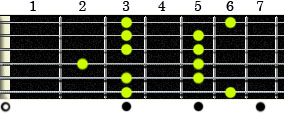
|
Position 2
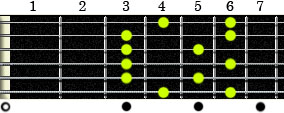
|
Position 3
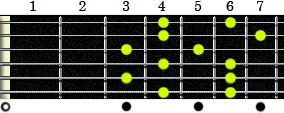
|
Position 4
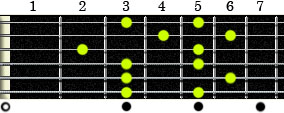
|
Position 5
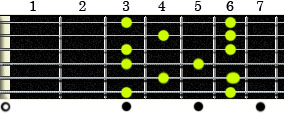
|
Straight descendin/ascending scale
To work those pentatonic scales, you can practice ascendingly or descendingly like on the previuos videos, or you can break them into groups of 3, 4 or 6 notes as follows (in Gm6 third fret here, hence in first position):
Broken scales
into groups of 3

|
into groups of 4

|
into groups of 6
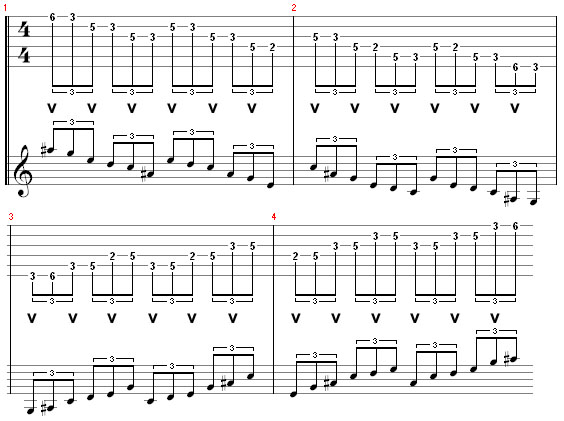
|
As you can see, we can vary this to a great extent.






